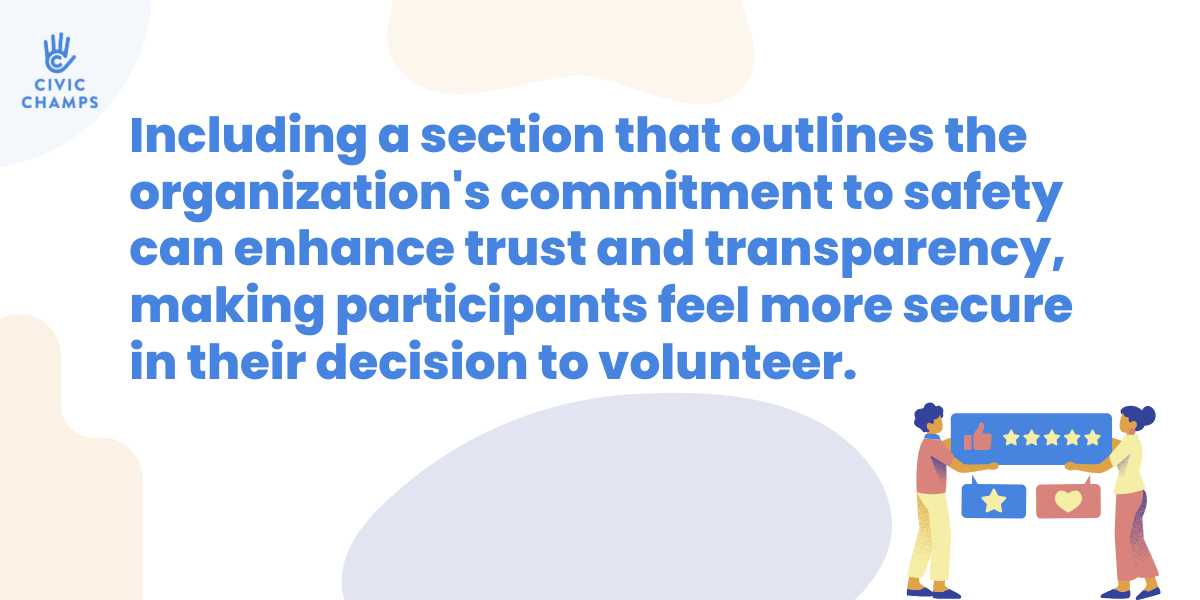Volunteer waivers are essential documents that protect organizations from liability when engaging volunteers in various activities. This comprehensive guide will explore everything you need to know about Volunteer Waivers, including how to create them, their enforceability, and their importance in safeguarding your organization.
How do I make my own waiver form?
Creating your own waiver form involves several key steps:
- Identify the purpose of the waiver and the activities it covers. Clearly outline the specific activities that the waiver pertains to, ensuring that participants understand what they are agreeing to.
- Use a Volunteer waivers template PDF or Word to ensure all necessary elements are included. Templates can provide a solid foundation, ensuring that you don’t miss any critical components. A free volunteer waiver form online can be a good starting point for those looking to customize their waivers.
- Incorporate feedback from previous events. If your organization has hosted similar activities in the past, gather insights from volunteers and staff about any issues that arose. This can help you refine the waiver to better address potential risks.
Are injury waivers enforceable?
Injury waivers can be enforceable if they meet certain legal criteria. The enforceability of a waiver often depends on the clarity of its language and the context in which it was signed. It is advisable to consult legal resources or professionals to understand the enforceability of your waiver, as a non-profit liability waiver may have different enforceability standards compared to other types of waivers.
For more information about the enforceability of liability waivers, we like the website LawInfo.com, which has great resources like this one that can offer an expert’s perspective on the matter.
Can you create a waiver on Google Forms?
Yes, Google Forms can be used to create a simple waiver form. This platform allows you to easily gather participant information and signatures. Be sure to include all necessary information and disclaimers in the form to protect your organization. Using a volunteer agreement template from Word can provide a structure for your Google Form, making the process more straightforward.
Check out our blog post on using Google forms as part of your organization’s volunteer management, including for things like waivers and agreements.
How long is a liability waiver valid?
The validity of a liability waiver can depend on state laws and the specific terms outlined within the document. Typically, waivers remain valid as long as the activities they cover are ongoing. Additionally, the Volunteer Protection Act of 1997 may influence the duration of waivers, providing further context on their applicability.
Our research indicates that organizations that periodically review and renew their waivers, especially before significant events, are better positioned to defend against liability claims.
What does a waiver need to include?
A waiver should include the participant's acknowledgment of risks and a release of liability. Clear language and specific details about the activities involved are essential to ensure that participants fully understand what they are agreeing to. Utilizing a volunteer waivers template from Word can help ensure all necessary components are included.
Moreover, including a section that outlines the organization's commitment to safety can enhance trust and transparency, making participants feel more secure in their decision to volunteer.
Click here to read our full blog that goes in depth on the standard elements of a good volunteer waiver.

What three criteria must a waiver meet to be valid and legal?
For a waiver to be valid and legal, it must meet three critical criteria:
- Clarity: The waiver must be clear and unambiguous in its language.
- Voluntary Signature: It should be voluntarily signed by the participant without coercion.
- Comprehensiveness: It must cover all relevant risks associated with the activities.
A free waiver template can guide you in meeting these legal criteria, ensuring that your waiver is both effective and enforceable. Ultimately, to be sure your waivers fit your organization’s needs, be sure to consult your own lawyer.
When should you consider getting a liability waiver?
Consider a liability waiver when organizing events with potential risks for participants. It is advisable for non-profit organizations to have waivers for volunteer activities to mitigate potential legal issues. A volunteer waiver and release form template can be useful in these situations, providing a structured approach to creating your waiver.
Additionally, our experience shows that proactive communication about the waiver process can enhance volunteer engagement and compliance, making it clear that the organization values both safety and transparency.
---
This guide serves as a resource for non-profits looking to navigate the complexities of volunteer waivers effectively. Remember, while this information is valuable, we are not a legal service and cannot provide legal advice. For tailored assistance, consider consulting with legal professionals or utilizing software tools that can simplify the process of managing volunteer waivers.
—
If you’re looking for ways to improve your organization’s volunteer program, be sure to check out Civic Champs. Our powerful platform is designed to make volunteer management a breeze so you and your supporters can stay focused on the mission. Click here to schedule a demo today.

As CEO of Civic Champs, I lead our team of passionate change leaders to create technology solutions to create a seamless and rewarding volunteering experience for both volunteers and service organizations.



